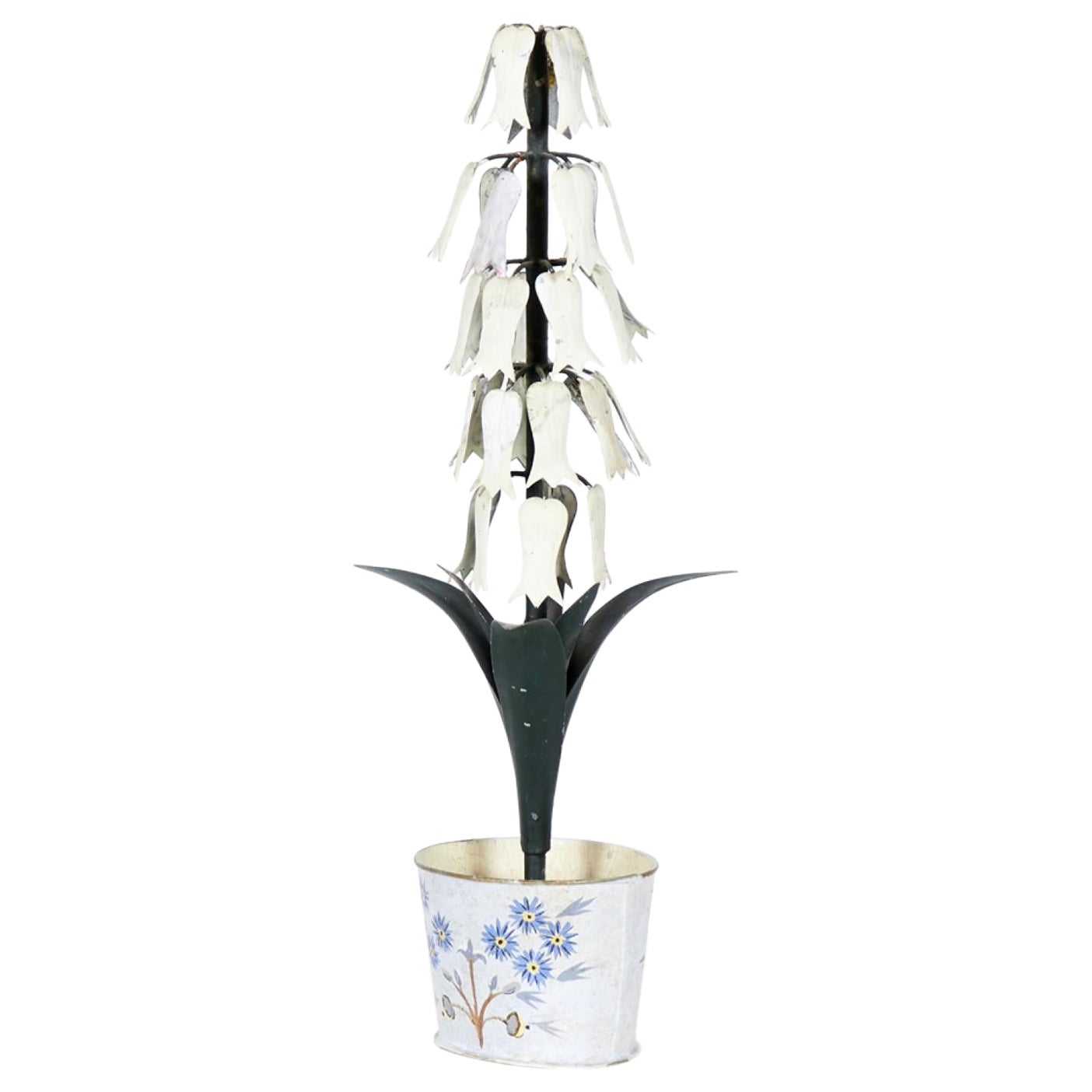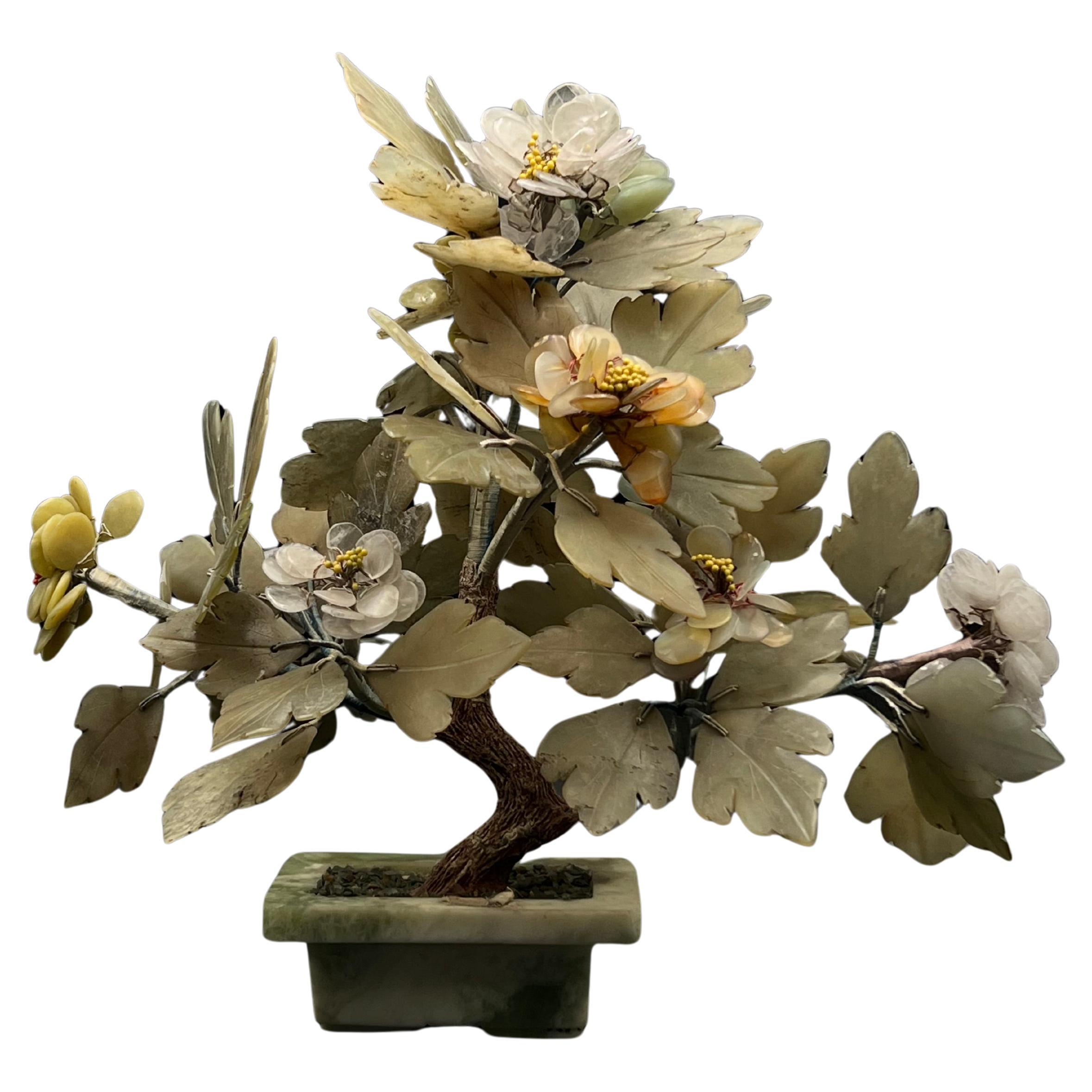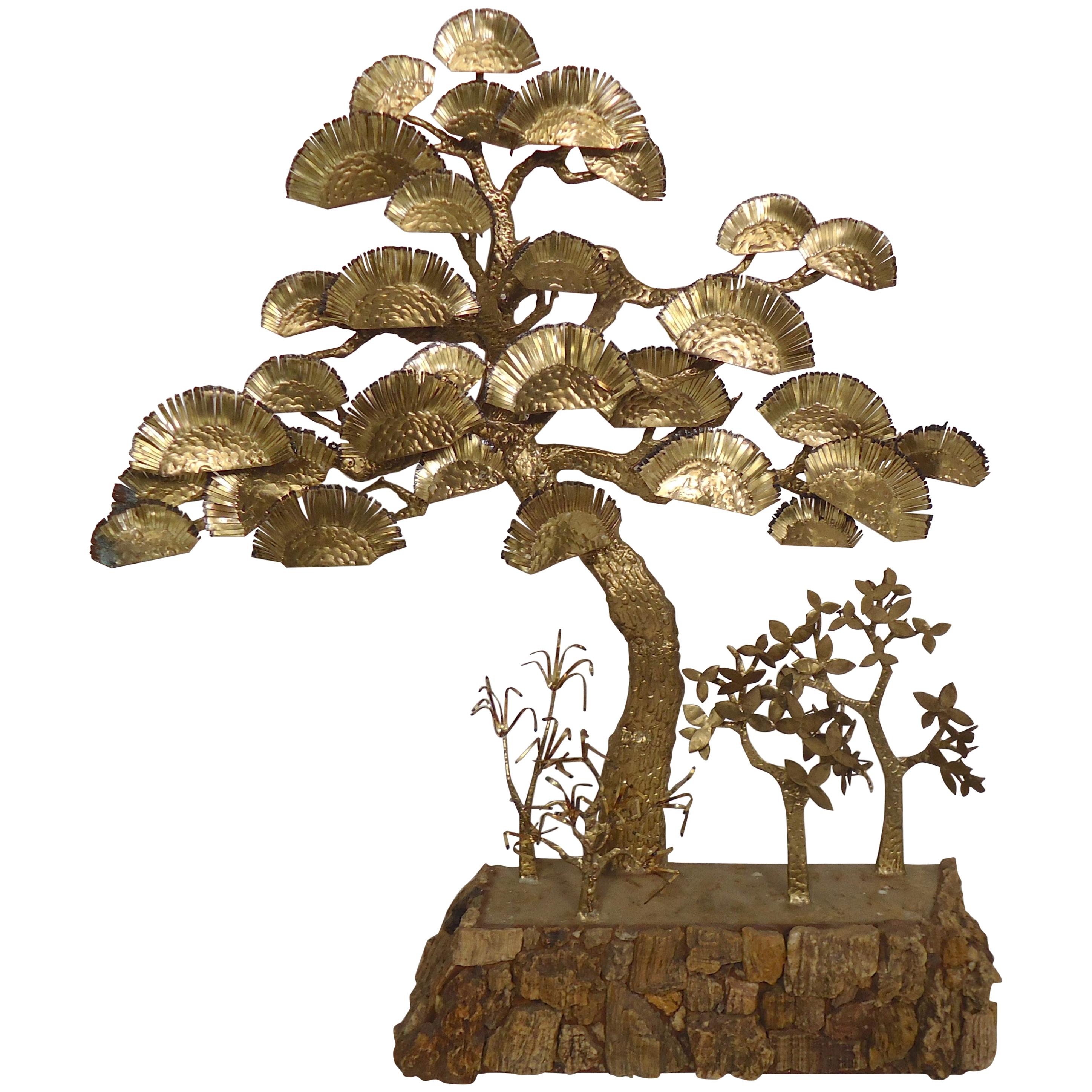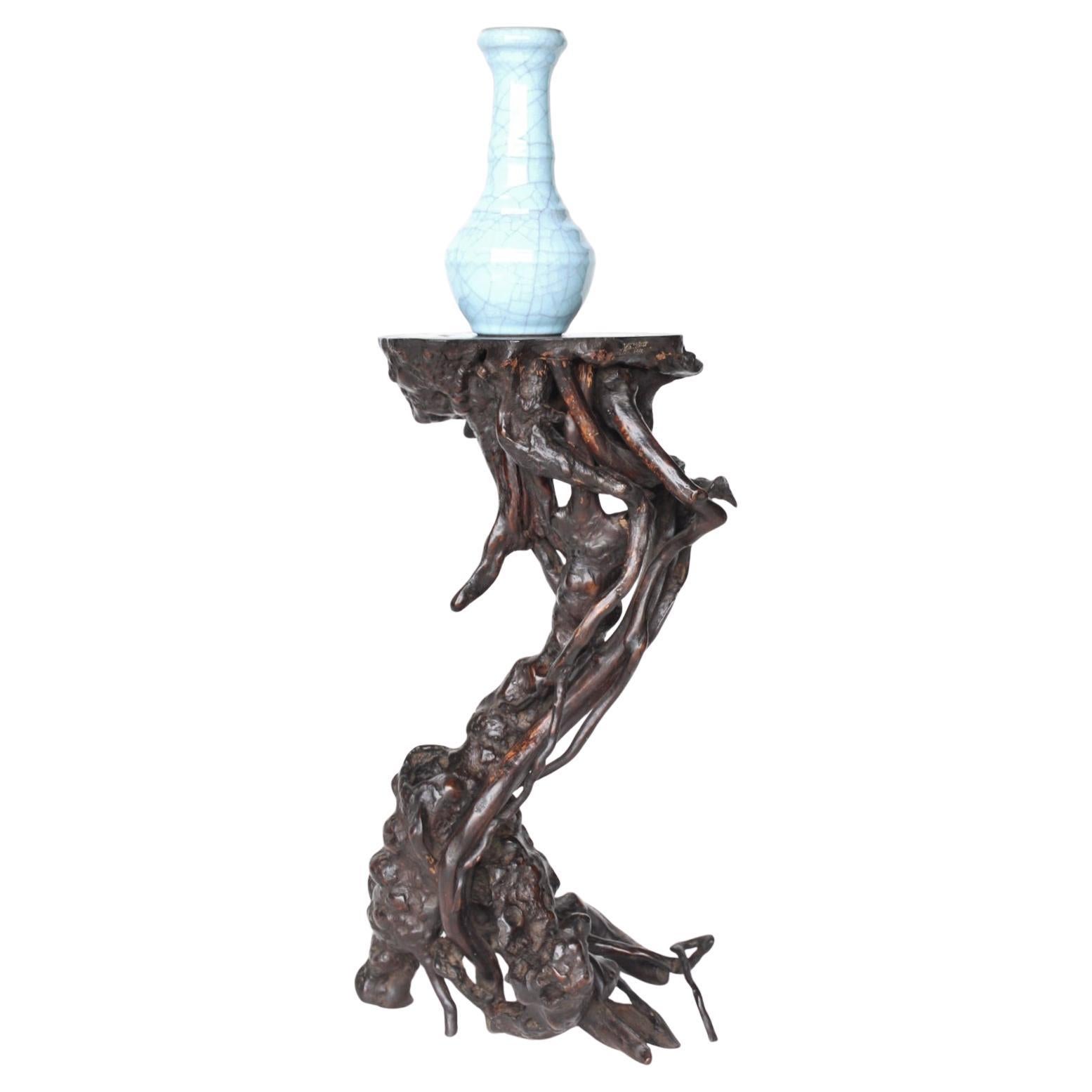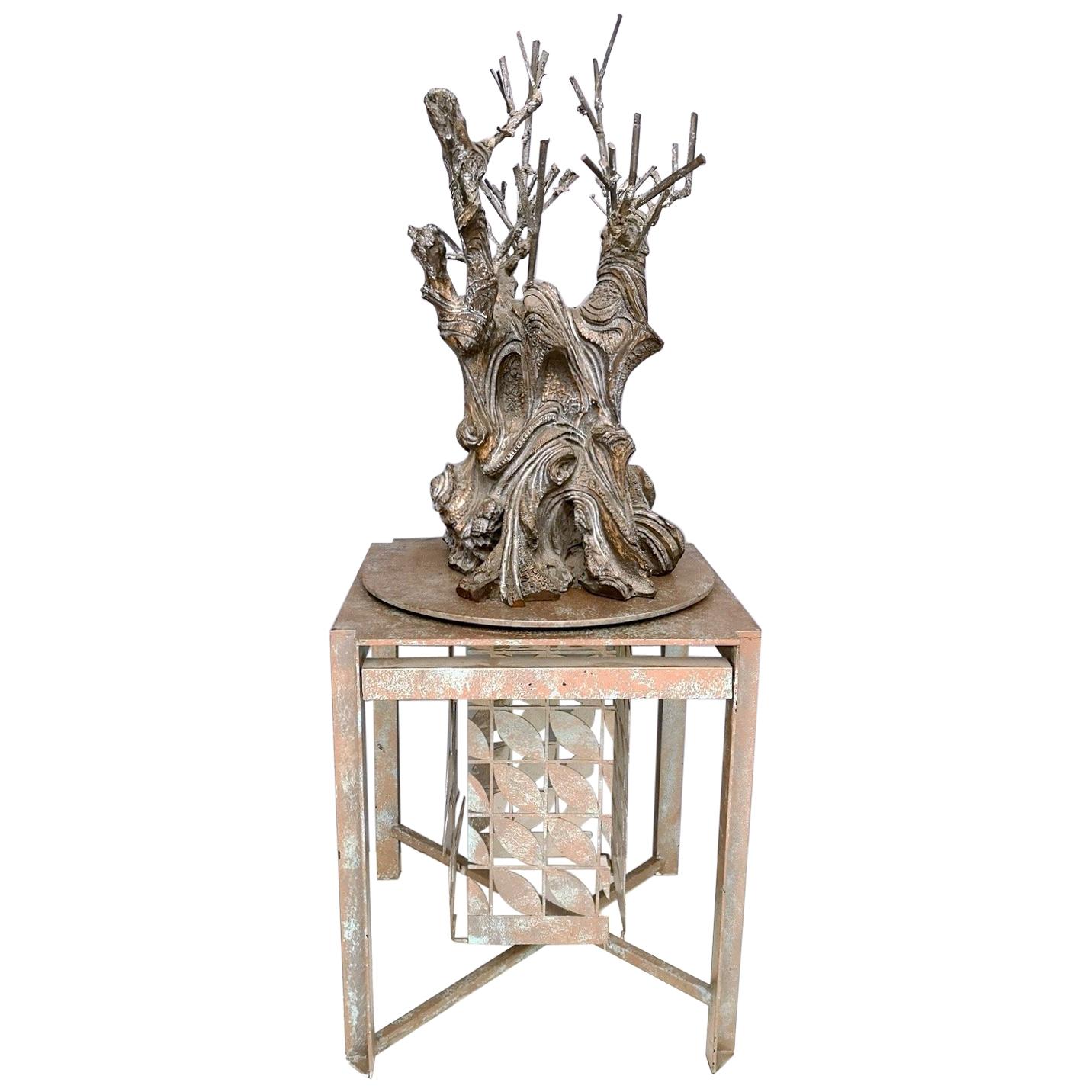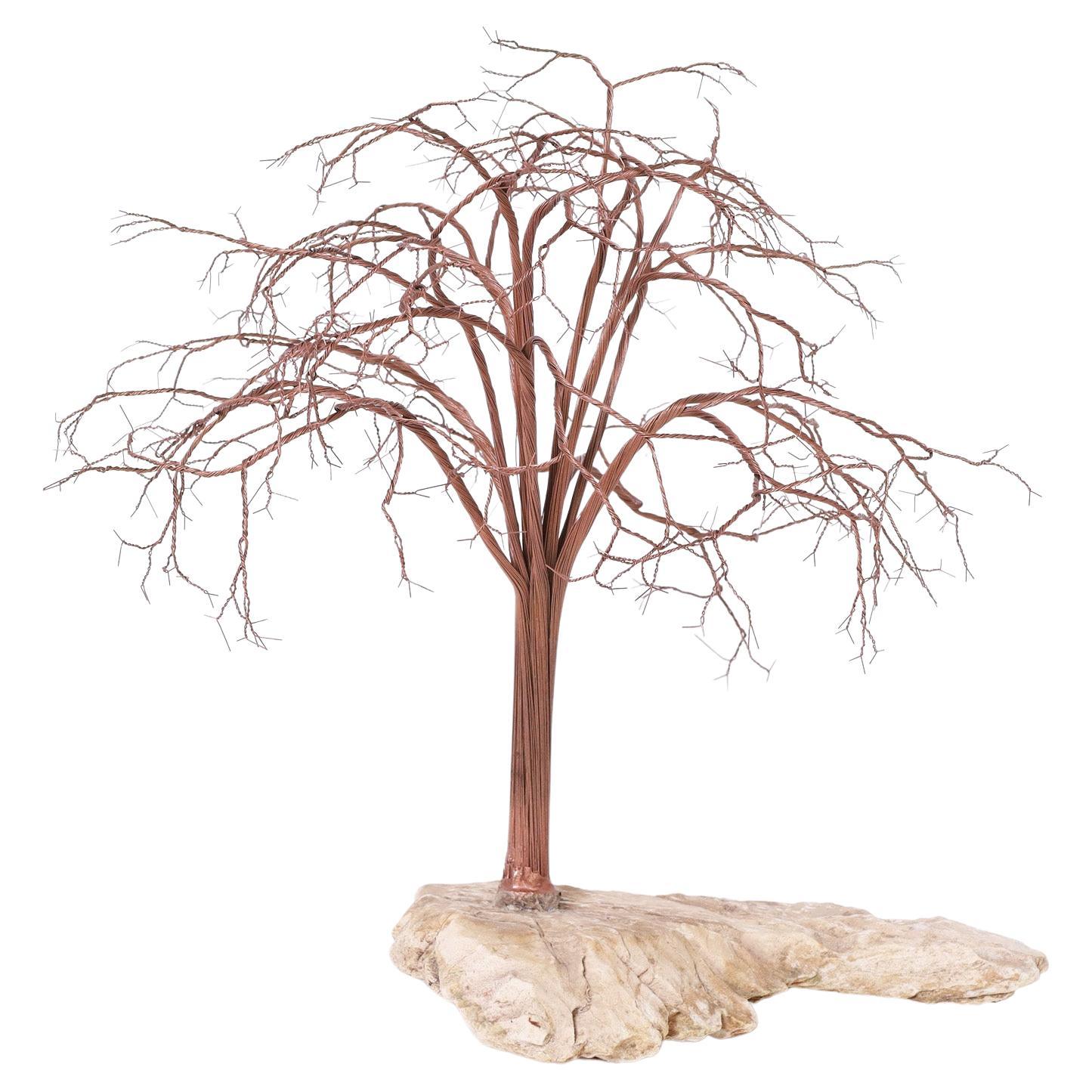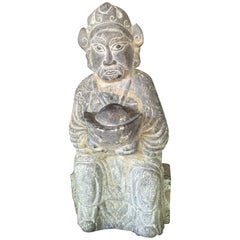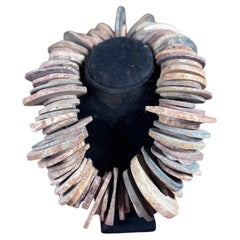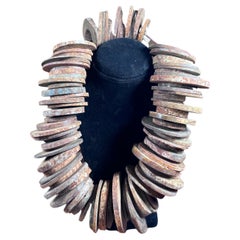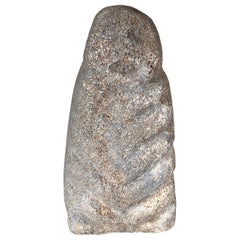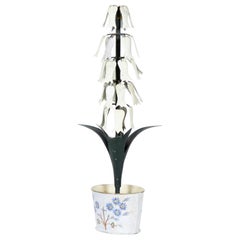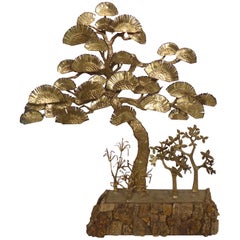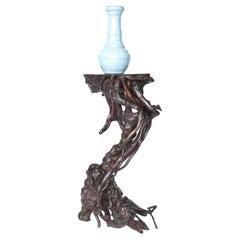Items Similar to Important Chinese Ancient Bronze Money Tree, 25BC-220AD
Video Loading
Want more images or videos?
Request additional images or videos from the seller
1 of 22
Important Chinese Ancient Bronze Money Tree, 25BC-220AD
$100,000
$150,00033% Off
£75,877.70
£113,816.5533% Off
€86,759.36
€130,139.0533% Off
CA$139,672.88
CA$209,509.3333% Off
A$155,297.24
A$232,945.8733% Off
CHF 81,087.65
CHF 121,631.4833% Off
MX$1,890,345.60
MX$2,835,518.4033% Off
NOK 1,034,643.12
NOK 1,551,964.6833% Off
SEK 969,411.16
SEK 1,454,116.7433% Off
DKK 647,501.10
DKK 971,251.6533% Off
Shipping
Retrieving quote...The 1stDibs Promise:
Authenticity Guarantee,
Money-Back Guarantee,
24-Hour Cancellation
About the Item
China, Ancient Bronze “Money Tree” Yaoqian Shu with original pottery base, Han dynasty (25 BCE – 220 CE)
Dimensions: 155cm, 62 inches high
A sculpted terracotta pottery base in the form of a tortoise with attendants and inserted with five individual bronze pole segments with twenty four individual hanging bronze open work money “branches” attached in tiers, four per tier and topped with a figure of a bronze phoenix as apex most bearing varying degrees of malachite and azurite encrustation from ancient burial.
Important Description Details:
Pottery "tortoise" base: 14.5" high and 11" wide
Bronze sections:
7pcs pole bronze sections approximately 8" length each
1pc top "phoenix" bronze section approximately 7" high and 6" wide
20 pcs long bronze hanging wings approximately 10" long and 5" wide each
4 pcs short bronze hanging wings (near top) approximately 7" long and 4" wide each
Total 32 pcs with ancient green and blue azurite patina.
Catalog reference: Schneible Fine arts catalog - 35 Years Collecting Treasures- Number 11p. 28 (see photos)
Provenance: Provenance: Private family collection formerly exhibited “Asia Week” New York City, Fuller Building, Zabriskie Gallery, 2008.
History of money trees:
In the late Han Dynasty tombs of western China, money was created as heavenly offerings to grow on trees insuring that the deceased’ needs would be met in afterlife. Large money trees are made of two sections: a sculptural pottery base and a bronze tree, whose molded, open work branches are intricately decorated with coin motifs, mythological animals such as deer who are associated with the magic elixir, images of Xiwangmu (Queen Mother of the Western Paradise and holder of secret immortality) and other Daoist symbols and immortals such as monkeys who try to steal the elixir. Because of the extraordinarily fine, open-work bronze designs, few money trees have survived totally in tact.
Our research indicates that only a hundred or so exist in tact worldwide, primarily in institutional collections. Various complete money trees are known, but with few exceptions the elaborate bronze upper part, cast with numerous branches suspended with coins, is broken into numerous pieces. A complete one in good condition is illustrated by Rawson, Mysteries of Ancient China, p.177, No.87, which was excavated in Pengshan county, Sichuan province.
Our gallery has been dealing in authentic ancient Chinese and Japanese antiquities and garden ornaments for 25 years. Our president personally travels to the far east each year to meet his network partners who assist him in finding best examples. He personally inspects each antique work of art to ensure its old age, authenticity and quality condition.
Lifetime guarantee of authenticity: All of our Asian works of art come with our Lifetime Authenticity Guarantee.
- Dimensions:Height: 62 in (157.48 cm)Width: 26 in (66.04 cm)Depth: 26 in (66.04 cm)
- Style:Han (Of the Period)
- Materials and Techniques:
- Place of Origin:
- Period:
- Date of Manufacture:25BC- 220AD
- Condition:Wear consistent with age and use.
- Seller Location:South Burlington, VT
- Reference Number:1stDibs: LU128926649013
About the Seller
5.0
Platinum Seller
Premium sellers with a 4.7+ rating and 24-hour response times
Established in 1990
1stDibs seller since 2015
2,386 sales on 1stDibs
Typical response time: <1 hour
- ShippingRetrieving quote...Shipping from: South Burlington, VT
- Return Policy
Authenticity Guarantee
In the unlikely event there’s an issue with an item’s authenticity, contact us within 1 year for a full refund. DetailsMoney-Back Guarantee
If your item is not as described, is damaged in transit, or does not arrive, contact us within 7 days for a full refund. Details24-Hour Cancellation
You have a 24-hour grace period in which to reconsider your purchase, with no questions asked.Vetted Professional Sellers
Our world-class sellers must adhere to strict standards for service and quality, maintaining the integrity of our listings.Price-Match Guarantee
If you find that a seller listed the same item for a lower price elsewhere, we’ll match it.Trusted Global Delivery
Our best-in-class carrier network provides specialized shipping options worldwide, including custom delivery.More From This Seller
View AllChinese New Year Antique Wealth God Caishen Sculpture
Located in South Burlington, VT
Our 34 inch tall Chinese Caishen's name is often invoked during Chinese New Year celebrations!
This is a large and unusual antique hand carved limestone Wealth God Caishen- coming from an old New England collection
Hand Made and Hand Carved
Measurements: 34 inches high and 15 inches wide,
Period: late Qing dynasty, late 19th-early 20th century.
This god grasps a silver sycee (an ancient form of silver wealth).
Provenance: Coming from an old New England collection and originally acquired from a Shanghai private collection decades ago.
History of China's Wealth God Caishen:
Caishen's name is often invoked during the Chinese New Year celebrations!
Caishen (simplified Chinese: 财神; traditional Chinese: 財神; literally: "God of Wealth") is the Chinese god...
Category
Antique 19th Century Chinese Qing Sculptures and Carvings
Materials
Limestone
$2,800 Sale Price
56% Off
Chinese Cache Ancient Heavenly Green Jade Bi , 94 pieces
Located in South Burlington, VT
This is a guaranteed authentic ancient Chinese jade bi cache of ninety four (94) discs from the Qijia culture, Northwestern China, circa 3000-2000 BCE.
Including Our Certificate of ...
Category
Antique 15th Century and Earlier Chinese Antiquities
Materials
Jade
Chinese Cache Ancient Heavenly Green Jade Bi , 96 pieces
Located in South Burlington, VT
This is a guaranteed authentic ancient Chinese jade bi cache of ninety six (96) discs from the Qijia culture, Northwestern China, circa 3000-2000 BCE.
Including Our Certificate of A...
Category
Antique 15th Century and Earlier Chinese Antiquities
Materials
Jade
Chinese Ancient Hongshan Culture Stone Sculpture, 4700-2900 BC
Located in South Burlington, VT
China, a fine archaic human effigy hand-carved from a granular medium to dark gray volcanic stone with six (6) "V" sections carved front. Neolithic period, Hongshan culture...
Category
Antique 15th Century and Earlier Chinese Antiquities
Materials
Stone
Chinese Antique Monumental Buddhist Wooden Pagoda Tower, 70 Inches
Located in South Burlington, VT
China antique monumental Wooden Pagoda, total height is 70 inches, hand carved and hand painted wood, seven hexagonal sections plus finial, late Qin...
Category
Early 20th Century Chinese Qing Sculptures and Carvings
Materials
Wood
Japanese Beautiful Antique Bronze Bamboo Form Ikebana Vase- Rare Find
Located in South Burlington, VT
Hard to find red bronze "Bamboo" Form Ikebana Vase
This bronze vase was designed and signed by Japan National Living Treasure artist, Takahashi Keiten. See signature on bottom.
...
Category
Mid-20th Century Japanese Showa Sculptures and Carvings
Materials
Bronze
You May Also Like
Vintage Chinese Tole and Iron Potted Flower Sculpture
Located in Queens, NY
Vintage Chinese tole and iron decorative potted flower sculpture with white flowers connected to a green multi-leaf stalk, mounted in a circular white and blue metal base pot. (Simil...
Category
20th Century Chinese Chinese Export Antiquities
Materials
Iron
1 of 2, Chinese Jade Bonsai Tree with Jade Pot- No. 1
Located in Skien, NO
One of a pair No. 1 – Stunning Chinese handcrafted Bonsai Tree/Flower in white and green / gray white and green jade (for the leaves) and agate/hardstone (for the pink and yellow flo...
Category
20th Century Chinese Qing Scholar's Objects
Materials
Jade
Decorative Bonsai Style Brass Tree
By Curtis Jeré
Located in Brooklyn, NY
Unusual artwork in the style of Curtis Jere, featuring brass trees set on a bark looking base.
(Please confirm item location - NY or NJ - with dealer).
Category
Vintage 1960s Mid-Century Modern Figurative Sculptures
Japanese Antiques Tree Root Stand / Side Table Wabisabi bonsai premitive
Located in Niiza, JP
Rooted wood, natural wood, natural wood, bonsai table
340(W)× 580(H) × 270(D) [mm] 4kg
A table made using natural wood that has been loved as a bonsai table
A high-quality table wit...
Category
Antique 19th Century Japanese Antiquities
Materials
Wood
Postmodern Bronze and Iron Revolving Tree Decorative Object, Anonymous, Italy
Located in Bresso, Lombardy
It is in bronze and features a varnished iron top.
It might show slight traces of use since it's vintage, but it can be considered as in excellent original condition and ready to be...
Category
Vintage 1980s Italian Abstract Sculptures
Materials
Bronze, Iron
Copper and Stone Tree Sculpture
Located in Palm Beach, FL
Lofty mid century tree sculpture crafted in copper twisted into form and mounted on an organic stone base.
Category
20th Century American Mid-Century Modern Natural Specimens
Materials
Copper
More Ways To Browse
Ancient Bronze
Bronze Tree
Ancient Pottery
Ancient Chinese Antique
Gold Encrusted China
Ancient Gold Antiquities
Lifetime Arts And Crafts Furniture
Chinese Bronze Animals
China Coin
Chinese Coins
Bronze Deer
Deer Bronze
Chinese Tomb
Asian Coins
Blue Phoenix China
Chinese Bronze Figure
Chinese Pottery Figure
Bronze Monkey
